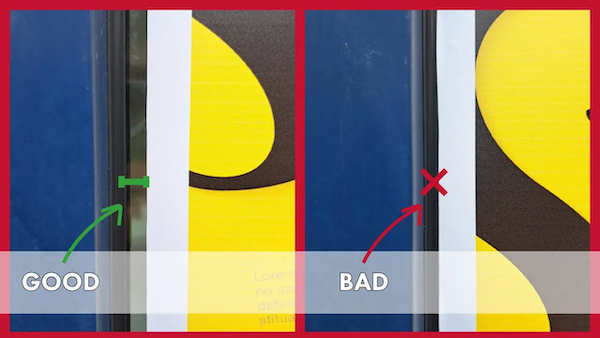Cathy Radoncic, Territory Sales Manager at Drytac, says that whether promoting a business to passers-by on the street outside or adding colourful decoration for those on the inside to enjoy, window graphics are a cost-effective solution in many environments.
However, that is not to say that these applications do not cause some issues for the customer in both the long-term and short-term, specifically when it comes to the excess coverage of a window. It is the responsibility of installers and providers to help mitigate risks and ensure they deliver a stress-free set of graphics to their customers.
But how do you go about avoiding some of the common issues with window graphics? To start, you need to understand the main problem that comes with excessive coverage: thermal stress. Larger areas that are covered with graphics can trap heat, which in turn leads to thermal stress on the glass. This can lead to the window glass cracking or shattering, which may then see your customer turn to you for some form of compensation.
The good news for installers and providers is that this issue can be easily avoided by taking the right steps during planning and installation. By carefully mapping out the project and paying attention to detail, you can ensure that the integrity of the glass is not compromised when installing the graphics.
One useful piece of advice for such an issue is to make sure you avoid covering the entire window with film, vinyl, and graphics, and to leave some space. This helps to prevent heat build-up and allows for better heat dissipation. Obviously take care to not impact the look and quality of the graphics and overall design, as this could also leave the customer feeling dissatisfied.
At Drytac, we recommend leaving a 3/8-inch (approximately 9mm) gap around the edge of the graphic so that it does not touch the window frame directly.This small space helps to prevent the graphic from trapping heat against the glass, and therefore significantly reduces the potential of thermal stress.
An additional reason of leaving a small gap is to ensure the application is only to clean glass and not the gasket or unclean glass typically found around the edge. This will improve adhesion strength and make sure the graphics remain in place, improving the overall quality of installation.
As for the other steps providers can take to avoid potential issues, the process begins before you start to install the graphics. Providers should be checking the condition of the glass to ensure that the surface is suitable for graphic application and does not show signs of existing damage or stress points that could cause issues later on.
Providers would also be well advised to periodically check the condition of the graphics and the windows. By doing this, you can identify signs of stress or damage to the windows and take the relevant action to address the issue more promptly before it becomes a larger problem that requires more work.
Finally, it is advisable to only work with quality and reliable materials from trusted brands that are specifically developed for window graphics. Avoid cutting costs by using products not marketed as speciality window graphics films as these are unlikely to perform anywhere near as well as specific solutions.
MIDCOMP
+27 10 020 9999
consumables@midcomp.co.za
www.midcomp.co.za















